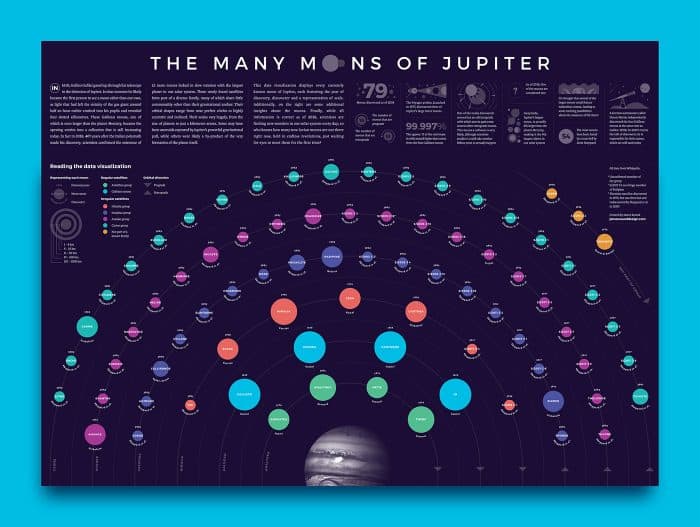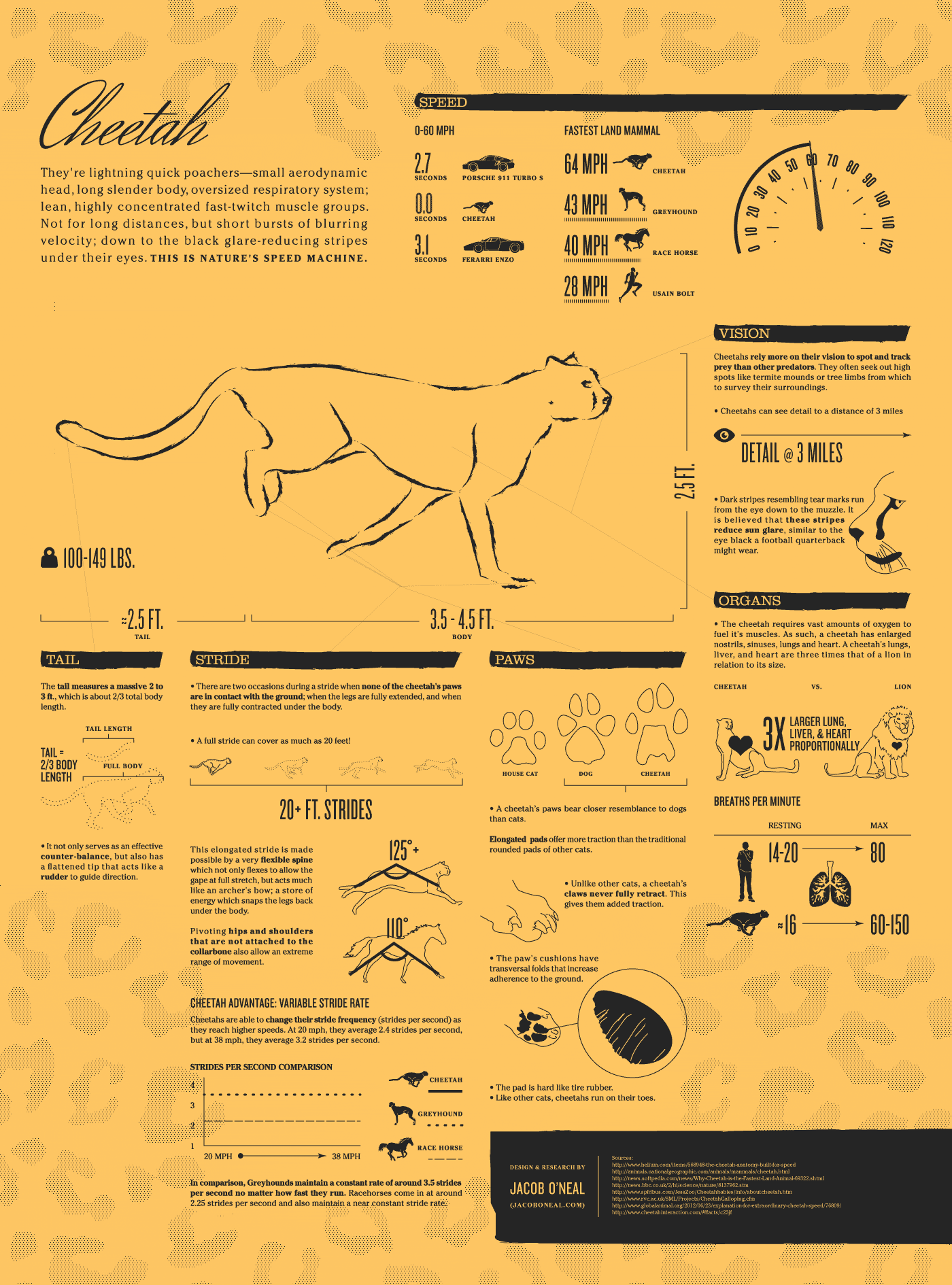
Astronomy articles focus on the planets in our solar system, which most people can name offhand. But do you know about the moons that surround the planets?
Jupiter’s moons, in particular, are the focus of this beautiful infographic. You may think of moons as being intrinsically small, but Ganymede, one of Jupiter’s moons, is actually 8% larger than Mercury, making it the 9th largest object in our solar system! This visualization represents all 79 currently discovered moons of Jupiter, together with their year of discovery, discoverer, and a representation of scale.
Since many of Jupiter’s moons are large enough to have been noticeable to early astronomers with rudimentary instruments, their discovery stories read like a timeline of astronomical history, from Galileo’s discovery of Europa, Callisto, Ganymede, and Io in 1610, all the way through to the slightly less poetically-named S/2018 J 1, discovered by Scott Sheppard and colleagues in 2018. Meanwhile, 3 of Jupiter’s largest inner moons were identified in 1977 by the Voyager probe, making Galileo’s 17th-century findings seem even more impressive. (If you want to learn more about the United States’ forays into space travel, read this guide to US space flights over the years.)
Not only does this visualization beautifully lay out a comparison of Jupiter’s many moons and their dates of discovery, but it also raises some interesting questions. For example, many of the larger moons could contain subsurface oceans, which could point to the possibility of life. What’s certain is that Jupiter’s moons still hold plenty of secrets, and we’re not even close to uncovering them all.



